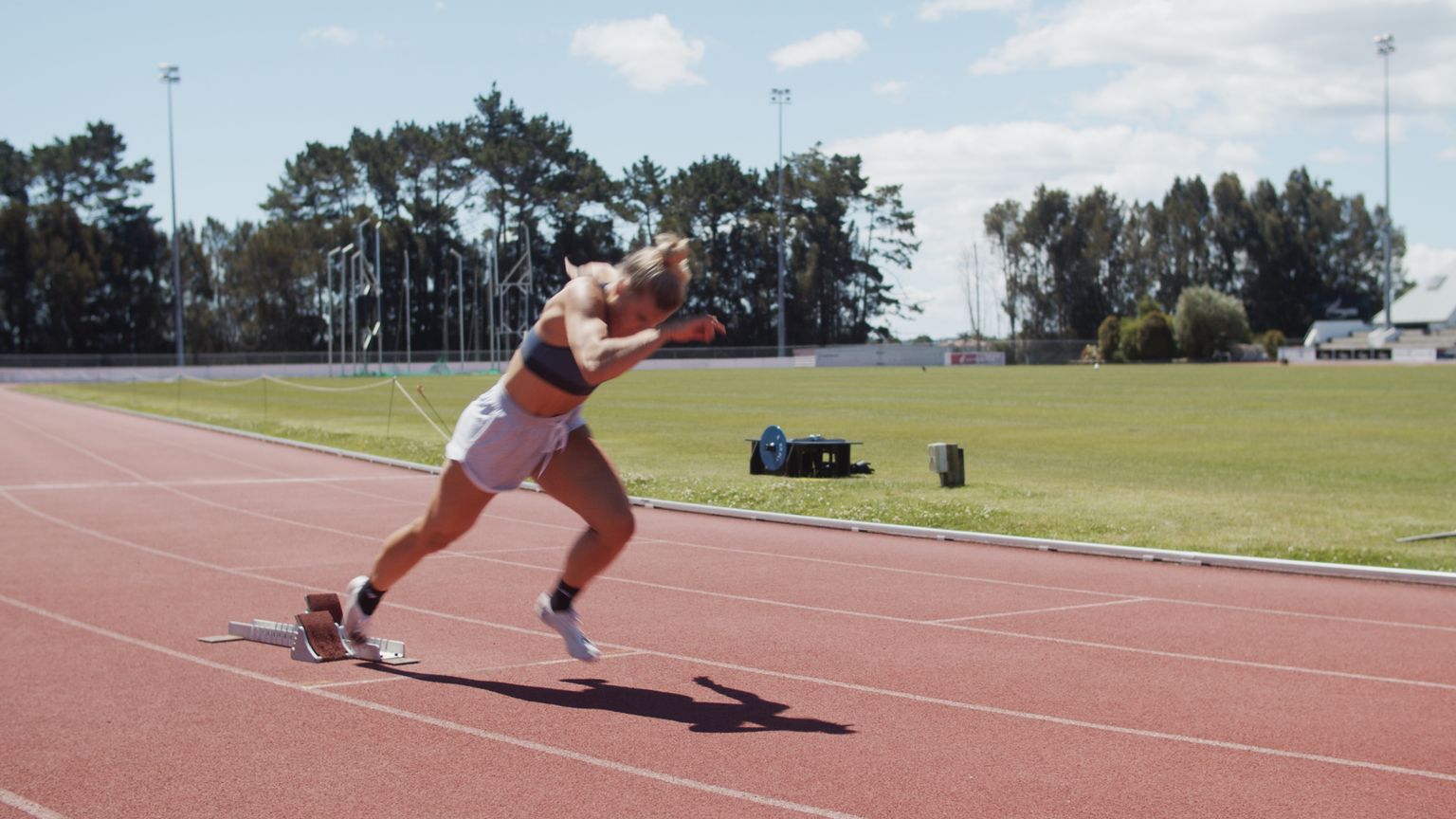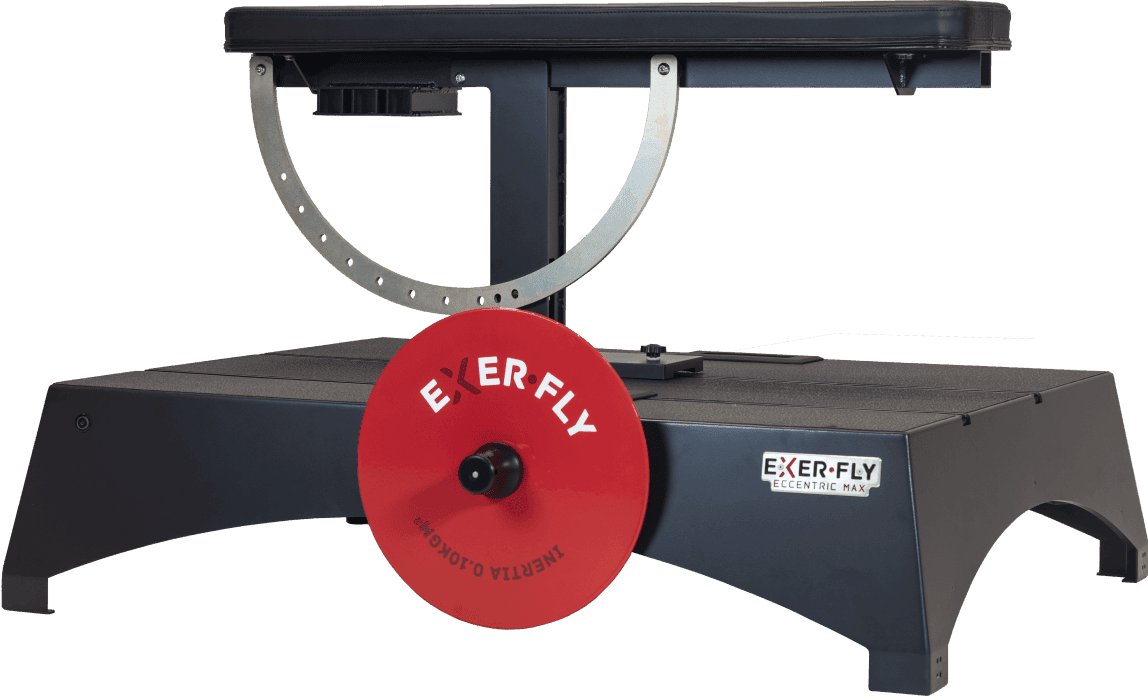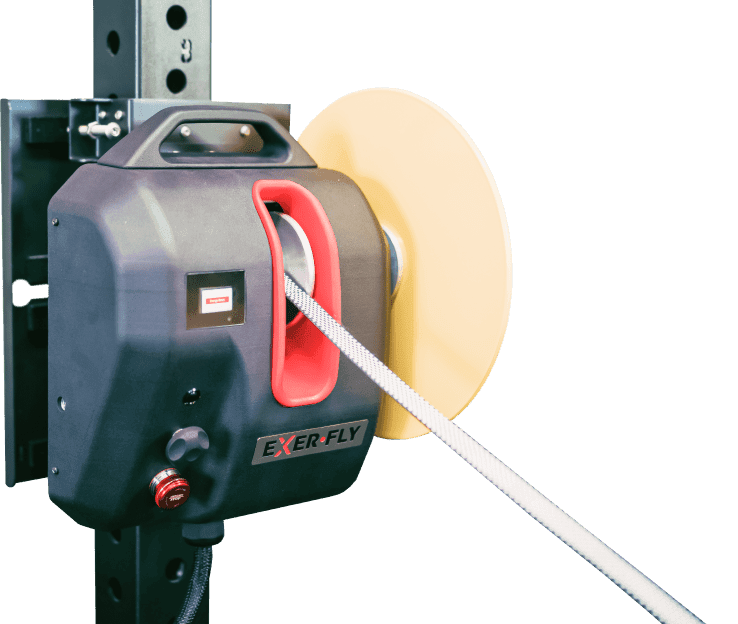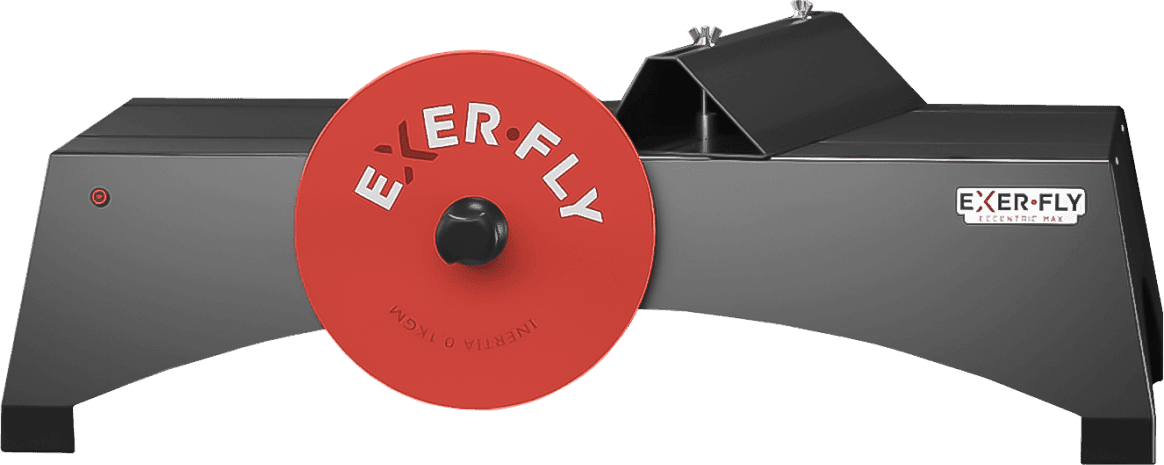
Eccentric Exerfly for the Quadriceps
Why Our Quadriceps Are Important For Daily Life
Let’s start with the basics. Quadriceps.
They live on the anterior (front) part of our thigh and are called the QUADriceps because there are four parts to it ( current research states that there may be a 5th quadricep) according to new studies from Grob et al (2016).
A quick anatomy review of quadricep:
-
Rectus femoris is located on the middle of your thigh.
-
Vastus lateralis lays just lateral (outside) to the rectus femoris.
-
Vastus medialis lays just medial (inside) to the rectus femoris.
-
Lastly there is the vastus intermedius which lays directly underneath or deep to the rectus femoris (Bordoni et al., 2022).
For the sake of consistency and organization here is another IMPORTANT list for you. This list will help you better understand how important these muscles really are.
-
One of the primary functions of the quadriceps is that it helps extend and/or straighten the knee. Think kicking your leg from bent knee to a straight knee position, like if you want to lift your feet to rest them on top of an ottoman. Or better, think of a soccer player who has to go from a loaded bent knee position and then quickly and powerfully extend their knee without injury.
-
The rectus femoris helps us flex our hip or raise our thigh to the chest. When you’re sitting down and want to pull your leg up to the ceiling, your rectus femoris helps do this. Not only does it affect our knee but it also has a direct impact on our hip stability, function and health. How does it affect our hip stability, function, and health?
-
The quadriceps as a group directly affects your patella and therefore your knee health. (Muraki, S. et al 2015) Does this clarify or elaborate on point number 2?
So now that we know what the quad does, let's spell out why it’s important to train. When we run, squat, jump, or simply walk our quad has to work to stabilize our knee as well as help us move the upper part of our leg (Bordoni et al., 2022). There are also some connections to the hip with flexion but we’ll come back to this. Later today when you are walking toward a chair before you sit down take an extra few steps. Notice how your quadriceps contract as your leg swings forward to help extend the knee?
There are three types of muscle actions: concentric, eccentric and isometric. As your leg straightens, this is your quadricep working concentrically, meaning the muscle goes from a lengthened position to a shortened one. The quadricep also works eccentrically to prepare your body to absorb impact, particularly for when your foot hits the ground. Eccentric means the muscle is going from a shortened to a lengthened position. Functionally, our quadricep eccentrically contracts to slow and control the rate of our knee swinging during our mid swing phase.
Photo from: https://www.researchgate.net/figure/Phases-of-the-normal-gait-cycle_fig3_309362425
Our body was built to walk/run/jog and move dynamically. This means our bone and muscle structure were built to absorb ground impact forces. We need our quad strength at an adequate level to help support our knees as we increase these ground impact forces. There is strong evidence to support that quadricep strength is directly related to knee pain as well as the eventual development of knee osteoarthritis in adults as found by Muraki, S. Et al. (2015). To avoid the development of knee pain and help to prevent injury we can look to develop greater quadricep strength. Here are a couple suggestions below:
First and foremost, we want to ensure we can keep good tension in our quads throughout the entire range of motion. One example of this is being able to keep tension and stability through our quads from standing deep into a squat/step up. Pay close attention to your thigh, how far forward your knees travel and how upright your posture is during a squat (any variation) or step up. A simple wall sit or split squat isometric hold can help you feel your quadriceps and indicate a starting baseline of endurance. I would encourage you to test yourself by doing sets to fatigue of :30 sec holds with :30 sec rest of wall sits. Rest for 3 min and then do the same for split squats. Document the level of difficulty and if you passed or failed the work listed above.
In order to functionally train our quadriceps there must be both a concentric and eccentric component. The exerfly provides a dual benefit simply based on physics and the principles of levers. The best way to build strength under tensile loads means working eccentrically. As noted previously we also need to learn how to work through an entire range of motion. Therefore using the exerfly allows anyone to emphasize the eccentric load while still having to work concentrically. The exerfly challenges an individual's eccentric load, push power, and/or strength within a workout. The setup of the exerfly forces the user to keep tension in the quadriceps throughout the entire movement and better replicates how the body has to stabilize during gait and dynamic movement.
A simple exercise to try:
Front squat (also known as an anteriorly loaded squat):
Single leg step down (also known as tap downs / taps)
Think of another? Get creative with anterior loading by checking out other exercises on the Exerfly blog/webpage
Flywheel Cycles
Eccentric Overload to be repeated 3x per week
Now that you know what eccentric movement is, we can tell you to get the most benefit out of this workout. On the concentric movement push up with around 50% of your perceived max power and work closer to 70 - 80% to slow the motion as the exerfly pulls you eccentrically back down to the ground.
Wk 1: 3 x 15 reps : 3 min rest between sets
Wk 2: 3 x 20 reps : 2 - 3 min rest between sets
Wk 3: 4 x 20 reps : 2 - 3 min rest between sets
Wk 4: 5 x 20 reps : 2 - 3 min rest between sets
Wk 5: 4 x 25 reps : 2 - 3 min rest between sets
Wk 6: 3 x 15 reps : 3 min rest between sets
Traditional Settings / Weight Reps
Hypertrophy phase 1
Wk 1: 3 sets of 8 at 70- 80%1RM
Wk 2: 4 sets of 10 at 70- 80%1RM
Wk 3: 4 sets of 12 at 60- 70%1RM
Wk 4: 5 sets of 10 at 70- 80%1RM
Wk 5: 5 sets of 12 at 60- 70%1RM
Wk 6: 3 sets of 8 at 80%1RM
Strength phase 1
Wk 1: 3 sets of 6 at 70- 80%1RM
Wk 2: 4 sets of 4 at 80- 90%1RM
Wk 3: 4 sets of 3 at 80- 90%1RM
Wk 4: 5 sets of 4 at 85- 95%1RM
Wk 5: 5 sets of 3 at 90 - 95%1RM
Wk 6: 3 sets of 6 at 60%1RM
Now let’s go back and retest the wall and iso-split squats. Were you able to increase the time held?
Why does it matter?
Many adaptive changes occur during eccentric overload training including muscle hypertrophy and changes in motor unit behavior and muscle function (Hedayatpour N, Falla D,. 2015). Hypertrophy is defined as the enlargement of muscle fiber cross-sectional area. This means that there is an increase in the number of myofibrils in each muscle fiber meaning more contractile proteins and a larger diameter of the fibers (Haff, G., Triplett, N., 2016). Collectively we see this on a macro level as feeling a pump or noticing our muscle group become more defined, perceiving it as larger. You will definitely feel this after completing the workload above on the Exerfly. Studies have found that increases in muscle hypertrophy leads to increases in forces generated by an individual muscle contraction.
Note that studies state, in order to have a significant effect, hypertrophy workouts have to be conducted an estimated 16 times before the changes become apparent (Haff, G., Triplett, N., 2016). Hypertrophy signals the body to recruit more muscle fibers during maximal contractions. For the exerfly, we recommend at least 3x a week for 6 weeks to get the most out of one's time and efforts on the exerfly. Over time, the body learns to contract more fibers in order to work more efficiently.
The exerfly does a great job of pushing our bodies into a state or hypertrophy by allowing change to the resistance. The decrease/increase of workload percentage allows for the body to be pushed into a state of eccentric overload that is safe and effective. Achieving this kind of work is difficult with traditional gym equipment because of safety, it is extremely hard to work into these ranges of sets/reps without risk of injury when having to lift weights such as a barbell for squats or heavier dumbbells. Yet for the body to build strength and power effectively the hypertrophy phase is extremely important.
The adaptation of recruiting more fibers is an extremely efficient adaptation for muscles to become more efficient with energy. The exerfly is one of the best ways to achieve this adaptation because of its allowance to push workload without risking safety. Imagine a single person trying to push a car versus 5 people pushing the car. That’s how our motor units begin to recruit when placed under a training regiment that challenges the muscle fibers while they are being lengthened, it disperses the load over more muscle fibers. With traditional training this signal of calling for more helpers to push the car is more difficult to achieve since there is a need to maximally test the working ability of involved muscles. The last thing we want is for that single individual to strain their back while trying to push the car. The beauty of the exerfly is that since you don’t have to increase the literal weight being placed on the body the risk for injury decreases substantially.
Putting it all together
The quads need to be strong in order to run efficiently. That means having the ability to quickly and powerfully bring the hip in and OUT of extension, good control of knee position as well as stabilizing the hip when the foot strikes the ground. The exerfly allows for high quality and efficient eccentric hypertrophy of the quadriceps muscle group. In order to maximize our strength we should be working into a hypertrophy phase for 6 weeks once every 3-4 months (depending on your training needs and timeline). Hypertrophy allows the body to maximally recruit muscle fibers to get the entire muscle involved and becoming more efficient with each contraction. Therefore, in order to have strong quads that can be the most efficient meaning more efficient running the exerfly can be utilized to push hypertrophy easily and effectively.
Let’s help you get faster by working smarter and harder.
Works Cited
Arhos EK, Capin JJ, Buchanan TS, Snyder-Mackler L. Quadriceps Strength Symmetry Does Not Modify Gait Mechanics After Anterior Cruciate Ligament Reconstruction, Rehabilitation, and Return-to-Sport Training. Am J Sports Med. 2021 Feb, 49 (2) : 417-425. doi: 10.1177/0363546520980079. Epub 2020 Dec 29. PMID: 33373534;
Bordoni, B., & Varacallo, M. (2022) Anatomy, Bony Pelvis and Lower Limb, Thigh Quadriceps Muscle. In: StatsPearls [Internet]. Treasure Island (FL): StatsPearls Publishing; Updated 2022 May 10. https://www.ncbi.nlm.nih.gov/books/NBK513334/.
Grob, K., Ackland, T., Kuster, M., Manestar, M., Filgueira, L., (2016) A newly discovered muscle: The tensor of the vastus intermedius. Clin Anatomy. 2016 Mar 29 (2) 256-263. Doi: 10.1002/ca.22680. Epub 2016 Jan 6. Access at https://pubmed.ncbi.nlm.nih.gov/26732825/
Haff, G., Triplett, N. (2016). Essentials of Strength and Conditioning. Fourth edition. Champaign, IL, Human Kinetics.
Hedayatpour N, Falla D. Physiological and Neural Adaptations to Eccentric Exercise: Mechanisms and Considerations for Training. Biomed Res Int. 2015;2015:193741. doi: 10.1155/2015/193741. Epub 2015 Oct 12. PMID: 26543850; PMCID: PMC4620252.
de Hoyo, M., Pozzo, M., Sañudo, B., Carrasco, L., Gonzalo-Skok, O., Domínguez-Cobo, S., & Morán-Camacho, E. (2015). Effects of a 10-Week In-Season Eccentric-Overload Training Program on Muscle-Injury Prevention and Performance in Junior Elite Soccer Players, International Journal of Sports Physiology and Performance, 10(1), 46-52. Retrieved Oct 13, 2022, from https://journals.humankinetics.com/view/journals/ijspp/10/1/article-p46.xml
Muraki, S., Akune, T., Teraguchi, M. et al. Quadriceps muscle strength, radiographic knee osteoarthritis and knee pain: the ROAD study. BMC Musculoskelet Disord 16, 305 (2015). https://doi.org/10.1186/s12891-015-0737-
Petré, H., Wernstål, F. & Mattsson, C. Effects of Flywheel Training on Strength-Related Variables: a Meta-analysis. Sports Med - Open 4, 55 (2018). https://doi.org/10.1186/s40798-018-0169-5
Pietsch, S., & Pizzari, T. (2022). Risk Factors for Quadriceps Muscle Strain Injuries in Sport: A Systematic Review. Journal of Orthopaedic & Sports Physical Therapy, 52(6), 389–400.
https://onlinelibrary.wiley.com/doi/abs/10.1034/j.1600-0838.2003.00312.x






